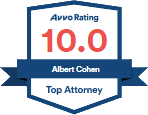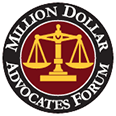Here at Cohen & Cohen Personal Injury Lawyers, P.C. , our experienced Queens car accident lawyers understand how frustrating it can be when a negligent driver causes a motor vehicle accident harming you or a loved one. We know that this is particularly frustrating or even aggravating when the cause of the motor vehicle crash was due to something so preventable such as texting while driving. The National Highway Traffic Safety Administration provides that there are over 3,000 deaths each year due to distracted driving. Some research indicates that distracted driving is as dangerous or more dangerous than drunk driving.
Our compassionate and experienced staff stands ready to help victims who have been seriously injured due to the negligence of another driver. If you have been harmed by the reckless, careless, or downright negligent conduct of another motorist, ask our Queens distracted driving car accident lawyers how we can help protect your rights to compensation.
Distracted driving continues to plague the roadways, but you can fight back with the help of Cohen & Cohen Personal Injury Lawyers, P.C. Based out of Queens, our personal injury firm serves all five boroughs of New York City. Our attorneys aggressively prepare your injury case from the very beginning of our relationship. That level of intense focus from start to finish enables us to maximize your leverage in the case, protecting your rights and recovering the compensation you need.
TEXTING WHILE DRIVING LAWS IN NEW YORK
Texting while driving is one of the most common causes of distracted driving accidents in New York. The State of New York has enacted various forms of legislation to combat texting and driving over the last 2 decades. against In 2001, New York became the first state in the US to issue a statewide ban on handheld cellphone devices. Then, in 2006 NY enacted more specific legislation to prohibit the use of a mobile telephone to text, email, or otherwise transmit data. Specifically, subdivision (1) provides that “no person shall operate a motor vehicle while using any portable electronic device while such vehicle is in motion.” This prohibits texting, e-mails, browsing the internet, social media, play a game, read documents, or any other use. The definition is very broad which is meant to encompass many different forms of conduct and handheld devices with a GPS, lap top or tablet. The only exception is during an emergency to summon help.
Some people wonder if using a phone hands-free is safer than hand-held, and unfortunately the answer is not always. One study done by MIT’s Department of Aeronautics & Astronautics found no statistical significance improvement in driving performance when using hands-free vs hand-held.
THE MANY OTHER TYPES OF DISTRACTED DRIVING
While texting seems to get the most attention, it is far from being the only form of distracted driving accidents. A moment’s reflection is all it takes to think of a wide variety of distracted driving, including:
- Day dreaming
- Talking on the phone
- Using a GPS
- Reading
- Eating
- Dealing with kids in the car
ESTABLISHING LIABILITY IN A DISTRACTED DRIVING CAR ACCIDENT
A driver who violates a statute that is meant to protect others from harm may be found automatically liable under the doctrine of negligence per se. This legal doctrine allows an injured victim to use the violation of a statute to prove liability. If the victim was meant to be protected from harm by the statute, liability against the negligent driver may be automatically proven. This allows victims and their Queens car accident lawyers to focus on proving the damages that are causes, including spending more time establishing pain and suffering, medical bills, lost wages, lost future earnings, and expanding on what future disability a victim may have due to the accident.
NEW YORK LAW PROHIBITS DISTRACTED DRIVING
There are two ways that New York law prohibits distracted driving. This is part of proving liability against a defendant-driver. Proving liability means that a defendant is culpable for a victim’s injuries. This allows victims to recover compensation under New York law. Without liability, a victim cannot recover damages. Often in distracted driving cases, liability is hotly contested. The two ways to establish distracted driving liability after a New York car accident include the following:
- NEGLIGENCE (COMMON LAW) STANDARD
- The first way is under the common law (judge-made law) standard of negligence. This is the most common way to prove liability in all personal injury cases. In a New York car accident case, all motorists owe a duty of care to others to exercise reasonable care in the use and operation of their motor vehicle to others on or around the roadways. Motorists that fail to use reasonable care while operating a motor vehicle may be found to have breached this duty. Any injuries or damages caused by this breach could result in compensation to victims.
- NEGLIGENCE PER SE: THE VIOLATION OF A STATUTE TO PROVE A CASE
- The second way is through the doctrine of negligence per se by using the violation of statutory law (legislatively-made law) to automatically prove liability. New York has two applicable Vehicle and Traffic Laws related to distracted driving. They are the following:
- New York Vehicle and Traffic Law section 1225-c governs “use of mobile telephones,” and provides under subdivision (2) (a) that “no person shall operate a motor vehicle upon a public highway while using a mobile telephone to engage in a call while such vehicle is in motion.” There are limited exceptions to this such as calling the police or a hospital/ambulance.
- New York Vehicle and Traffic Law section 1225-d governs “use of mobile telephone” and provides under subdivision (1) that “no person shall operate a motor vehicle while using any portable electronic device while such vehicle is in motion.” The definition of “use” is broad as to mean any transmission of data, including text messages, e-mail, or even browsing the internet or social media. There are exceptions such as calling the police or a hospital/ambulance.
- The second way is through the doctrine of negligence per se by using the violation of statutory law (legislatively-made law) to automatically prove liability. New York has two applicable Vehicle and Traffic Laws related to distracted driving. They are the following:
If a motorist violates either of these statutes and causes a New York car accident resulting in personal injuries, a motorist may be found to be negligent per se. This is an important tool that a Queens auto accident lawyer could use for a victim and his or her family to establish liability and ultimately recover compensation.
INJURED IN A DISTRACTED DRIVER ACCIDENT? GIVE US A CALL TO SEE HOW WE CAN HELP.
If you or a loved one were seriously injured or if a loved one was wrongfully killed, ask our Queens car accident lawyers at Cohen & Cohen Personal Injury Lawyers, P.C. how we can help protect your rights to compensation. All forms distracted driving are very dangerous, especially texting while driving. It is also one of the most preventable and easily avoidable types of accidents. Learn more how our legal team can fight for your rights by calling (718) 971-2107 for a FREE case evaluation or use our convenient and easy-to-use contact us box available here.
LEARN MORE ABOUT HOW WE CAN HELP YOU
You can schedule an initial consultation with a car accident lawyer in New York at our firm by calling us at (718) 971-2107. You can also contact us to make your appointment by reaching out online.












